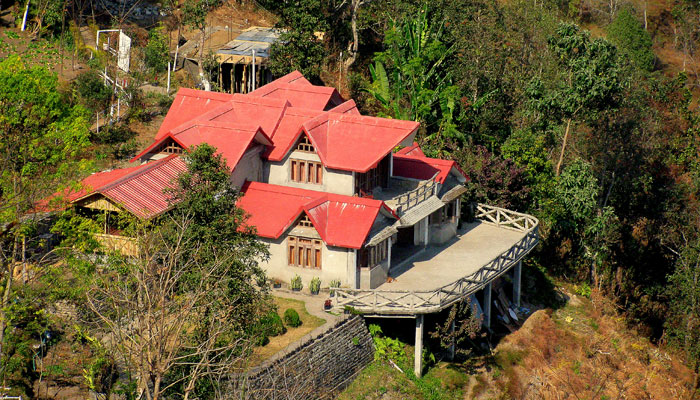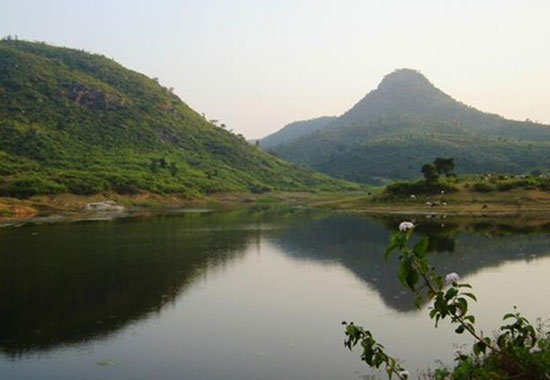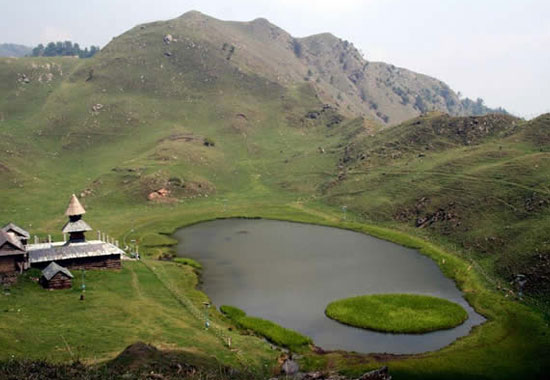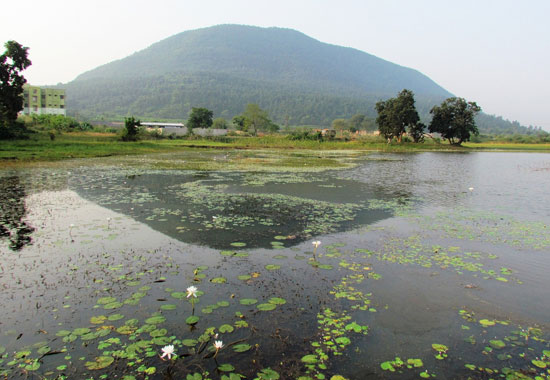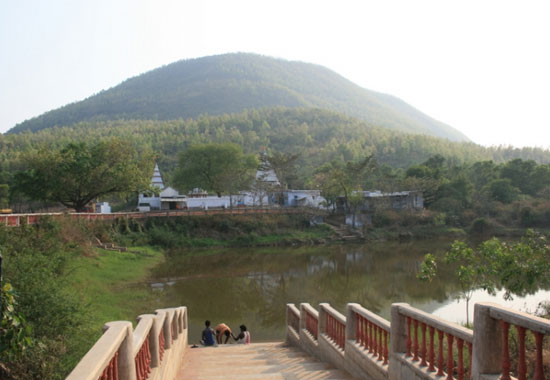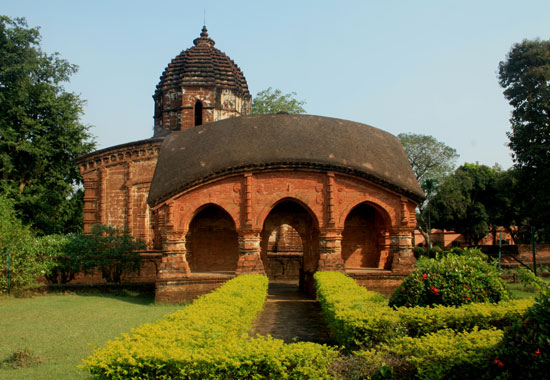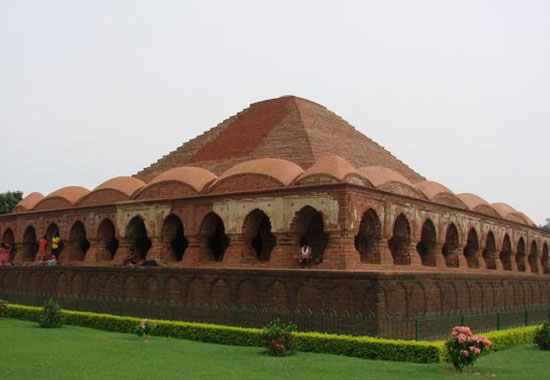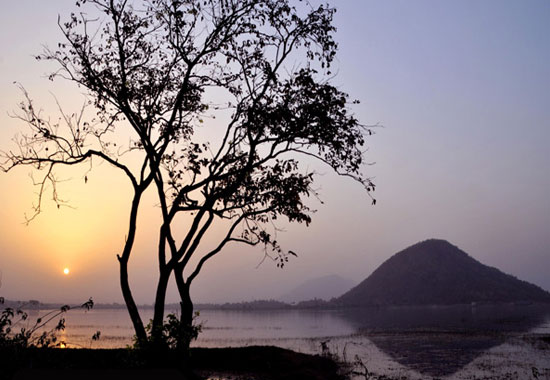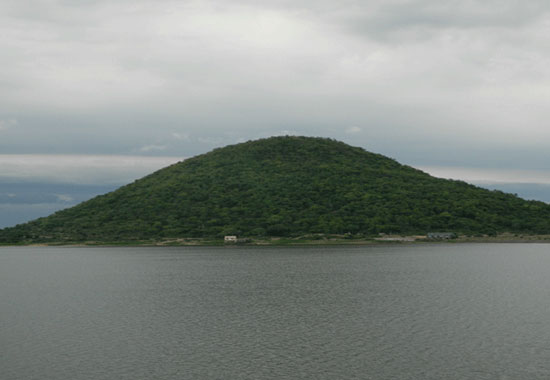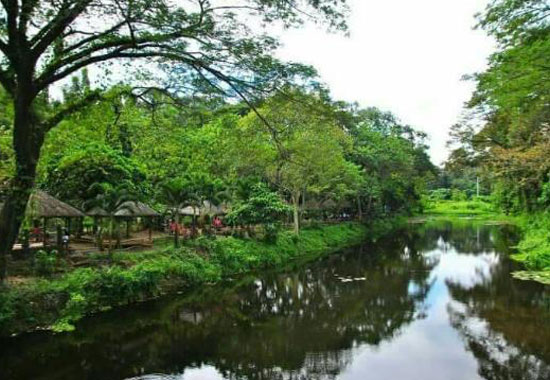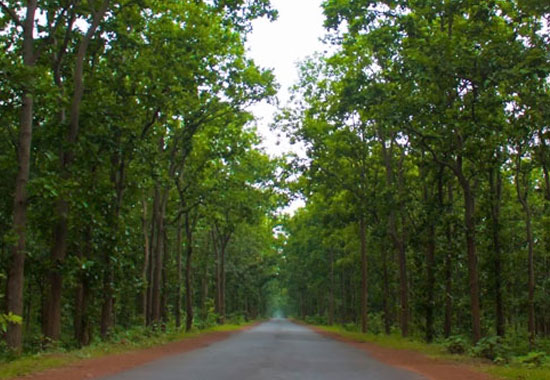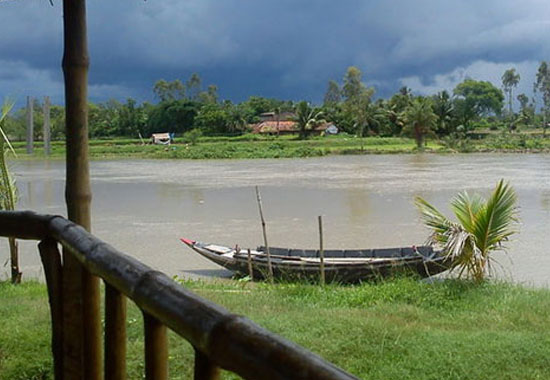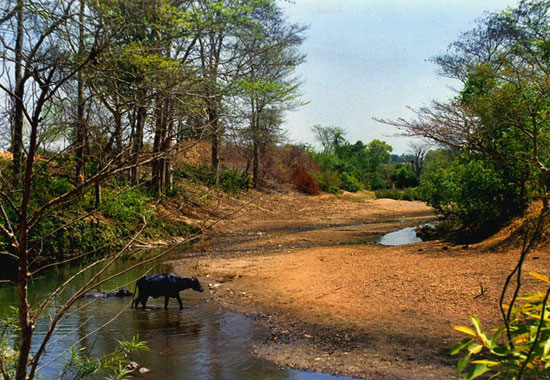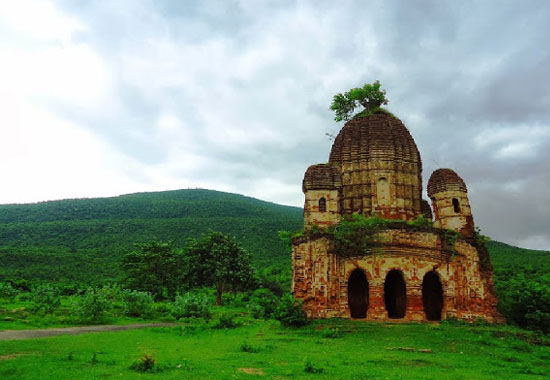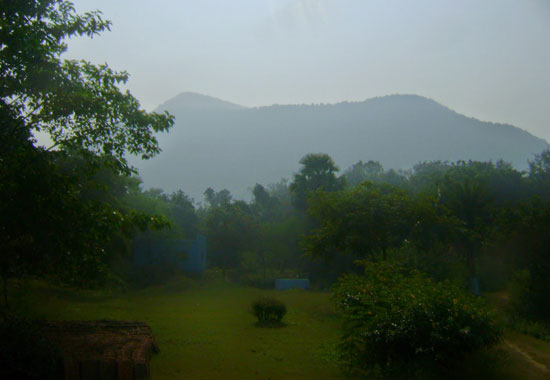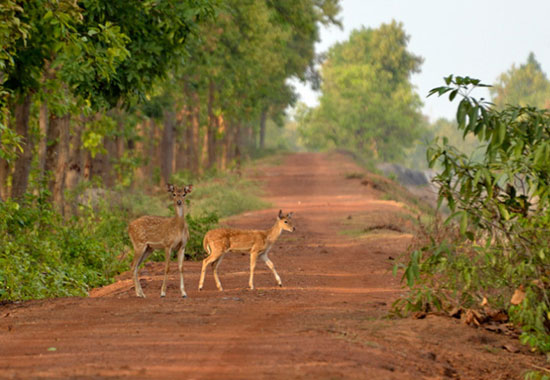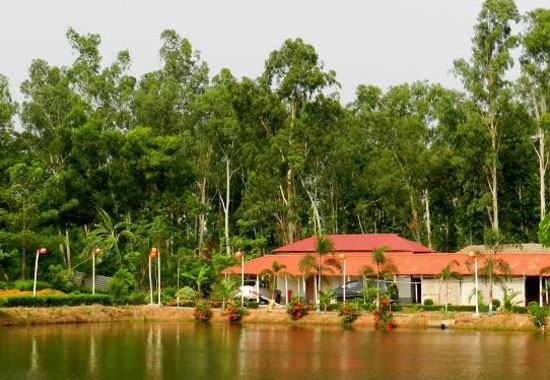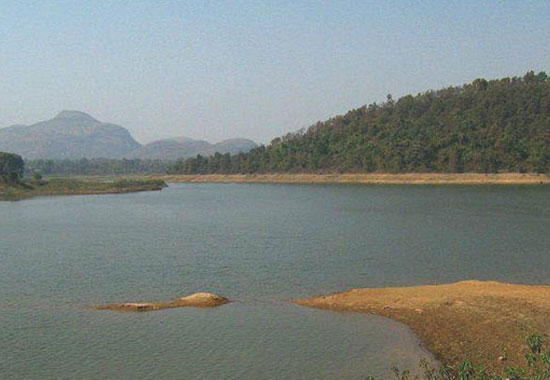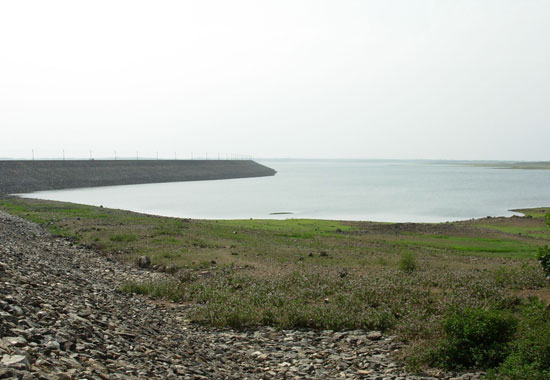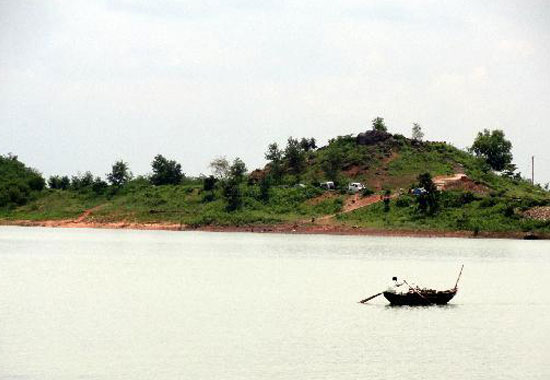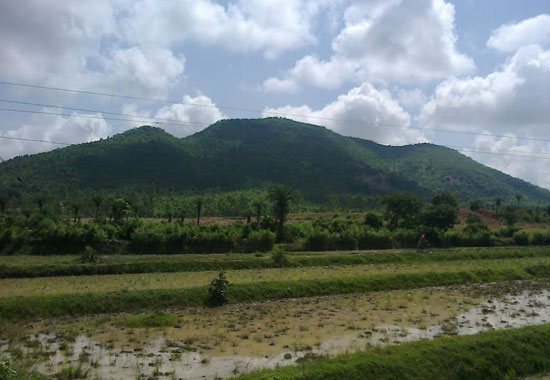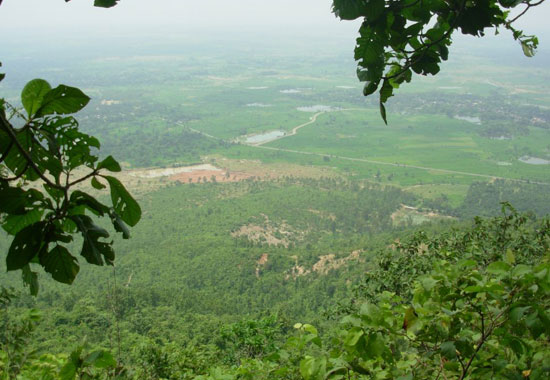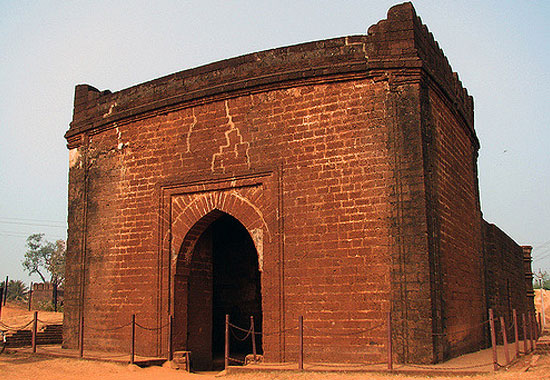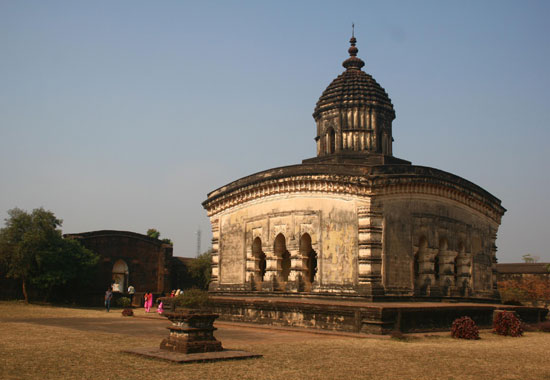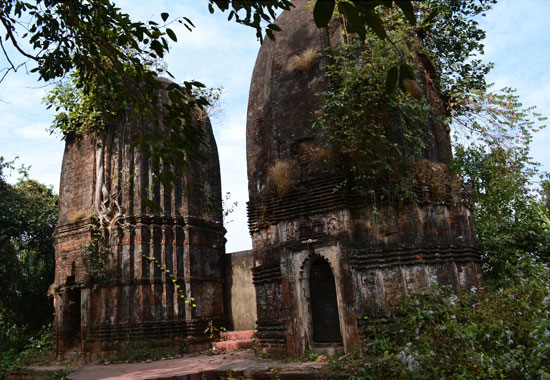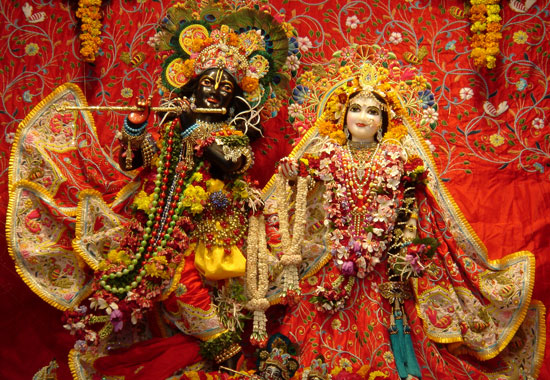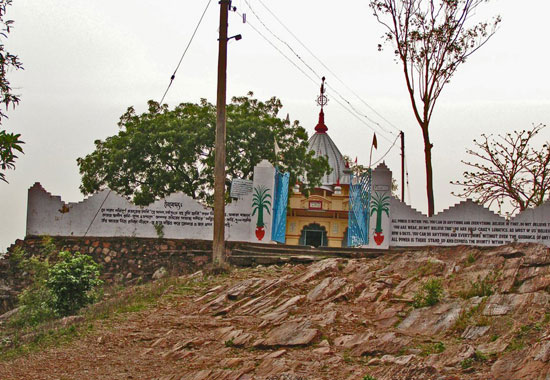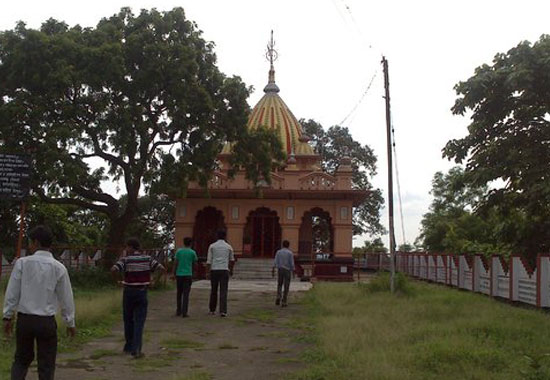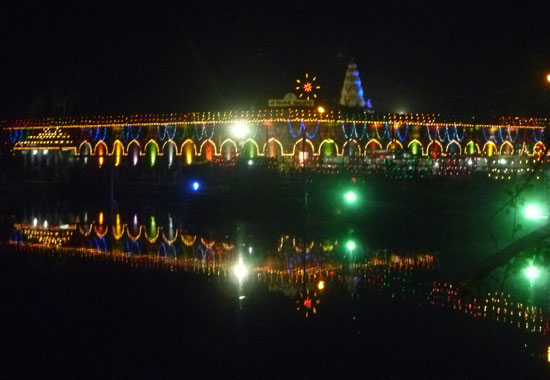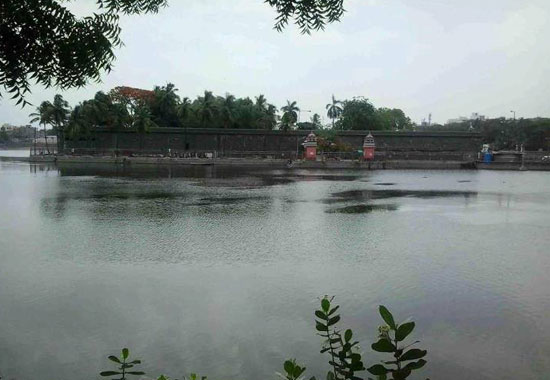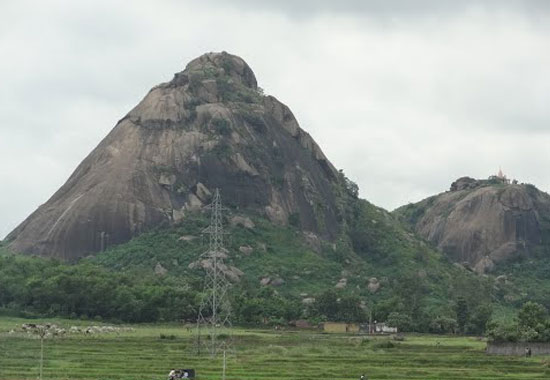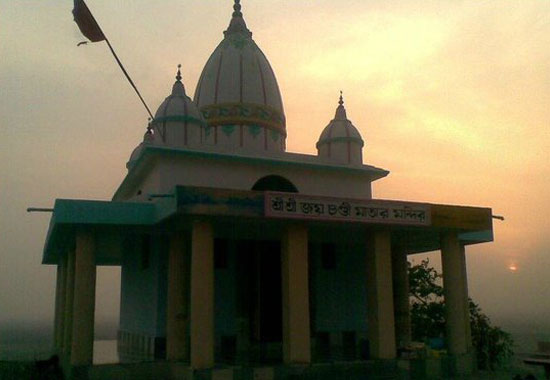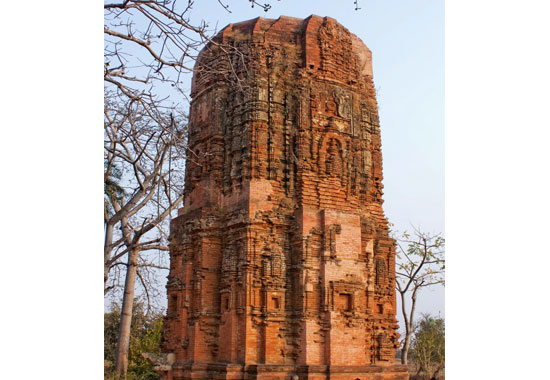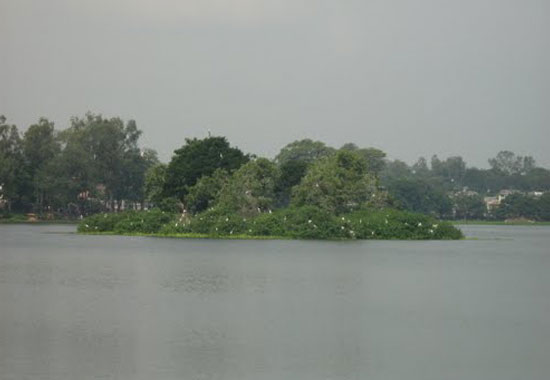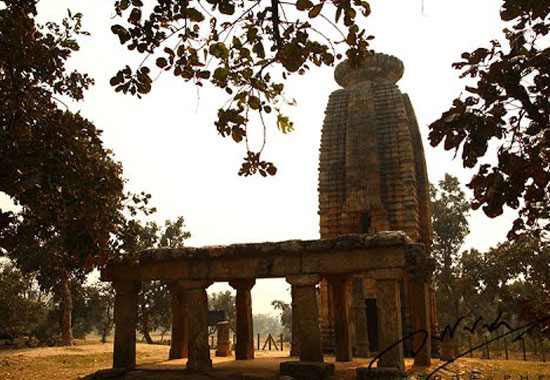PLACES OF INTEREST IN NORTH-EAST
Alipurduar (150 km. from Siliguri)
Alipurduar is a municipal city and the district headquarters of Alipurduar district in north Bengal in the Indian state of West Bengal. Situated on the east bank of Kaljani River on the foothills of the Himalayas, the town is a gateway to Bhutan and northeastern states of India.
Alipurduar town and the district is gaining prominence in tourism because of its advantageous location. The town itself does not have much to offer for the tourists. But the surrounding area offers excellent travel attractions within the district. A number of interesting choices are available within a short traveling distance. Dense forests and hills offering beautiful natural landscape surround the town.
Nearby attractions : Buxa - The most important forest near Alipurduar is Buxa Tiger Reserve (BTR) , which attained much fame all over India for its enormous natural resources in terms of rare flora and fauna. The forest has got the status of a National Park and houses the maximum number of Royal Bengal Tiger Population in North Bengal. The entry point of BTR, at Rajabhatkhawa, is just 12 Kilometers from Alipurduar. Within BTR, tourists have the option of visiting Jayanti or go to Buxa fort. If you are a little adventurous, you may go up to Lepchakha (A 4 km trek). There are also great trekking options in the area including trek to Sinchula and Rovers Point. The highest peak of Jalpaiguri the Chota Sinchula is located near Alipurduar. At an altitude of 1733m at about 12 km from Buxa the peak offers beautiful sights of the impermeable forest covers of Buxa hills and Bhutan valley. Other interesting tourist destinations around Alipurduar include Hatipota, Raimatang and others. Chilapata forests are also not very far. Hasimara is about 35 kilometers from Alipurduar and Chilapata forests starts from Hasimara onwards. Bhutanghat is another popular tourist destination within the Buxa Tiger reserve near Alipurduar. Situated deep inside the forest Bhutanghat is a popular picnic spot as well as good sight seeing option.
Trekking Around -
Alipurduar does not deprive the trek lovers. A day trek to Buxa hill
through dense forest track reaches Buxa fort and further up to Rovers
Point and then leads to Rupam Valley in Bhutan Hill (2 to 3 days).
Jayanti Mahakal trek is another popular route that leads to a stalactite
cave near Bhutan boarder. This trek is also very popular among the
pilgrims who visit the cave to offer prayer to their deity.
Best visit time : You can visit the place at any time of the year, except the rainy season as the forest remains close at this time.
Best visit time : You can visit the place at any time of the year, except the rainy season as the forest remains close at this time.
Bagora (Kurseong- 60 km. from Siliguri)
Bagora, a quaint village, located at a height of 7100 feet above sea
level, in the Darjeeling district, is not yet explored and hence it
still remains unexploited.
You can take a short stroll from Bagora to the Kurseong Air Force base alongside the Tea Gardens. The site offers a spectacular view of the vast stretch of River Teesta and breathtaking views of Mt. Kanchenjungha.
You can always enjoy a nature walk along the scenic landscape of the region. There is also a nice trekking trails from Bagora to Zero point. The place is also a heaven for the avid bird watchers, as Bagora is the home to a wide variety of birds. You can also walk down the shadowy forest trail to Tiger Hill, to watch the spectacular sunrise or plan for a trek of 12-km to Mongpu. If you are planning for more than a weekend in Bagora, enjoy a three-day forest trek from Kurseong to Kalijhora via Bagora, Namthing Pokhri and Latpanchar.
You can take a short stroll from Bagora to the Kurseong Air Force base alongside the Tea Gardens. The site offers a spectacular view of the vast stretch of River Teesta and breathtaking views of Mt. Kanchenjungha.
You can always enjoy a nature walk along the scenic landscape of the region. There is also a nice trekking trails from Bagora to Zero point. The place is also a heaven for the avid bird watchers, as Bagora is the home to a wide variety of birds. You can also walk down the shadowy forest trail to Tiger Hill, to watch the spectacular sunrise or plan for a trek of 12-km to Mongpu. If you are planning for more than a weekend in Bagora, enjoy a three-day forest trek from Kurseong to Kalijhora via Bagora, Namthing Pokhri and Latpanchar.
Nearby attractions : Kurseong is just 8 kms
from Bagora and most of the sightseeing options of Kurseong like Eagle's
Craig view point, Ambootia Temple, Bhangzang Salamander Lake and
Giddapahar Seti Mata Temple are all located nearby
Best visit time : You can visit Bagora any time of the year. In March and April, you would find the Rhododendrons in full bloom in the surrounding forests.
Best visit time : You can visit Bagora any time of the year. In March and April, you would find the Rhododendrons in full bloom in the surrounding forests.
Bara Mangwa (Kalimpong – 60 km. from Siliguri)
Perfect place for adventure seekers and nature lovers, the Bara Mangwa
Farmhouse perched on a mountain slope amidst orange orchards facing the
confluence of Teesta and Rangeet Rivers is the closest you can get to
heaven. Located in the Darjeeling district, towards the western side of
the Kalimpong hills, in the Teesta Valley, the Bara Mangwa village is
home to few terraced farms, local huts and too many orange orchards.
But, the real star of this little village is the farmhouse, which offers
good accommodation facilities and clean organic food plucked from its
own farms. The farmhouse also has its own poultry and a small goat and
pig house. Bara Mangwa is a tiny village that gives you the opportunity
of experiencing life in its simplest forms in a little and forgotten
corner of the Himalayas.
You first have to get down at New Jalpaiguri Railway station and then take NH-31A straight to Teesta Bazaar. From here you need to take left after crossing the Teesta Bridge to reach Bara Mangwa village. From New Jalpaiguri railway station, you need to hire a car to cover your distance. The nearest airport is Bagdorgra Airport.
You first have to get down at New Jalpaiguri Railway station and then take NH-31A straight to Teesta Bazaar. From here you need to take left after crossing the Teesta Bridge to reach Bara Mangwa village. From New Jalpaiguri railway station, you need to hire a car to cover your distance. The nearest airport is Bagdorgra Airport.
Nearby attractions : There
are many places around Bara Mangwa village where guests can visit.
Kalimpong is one such place which is located some 21 kilometers from
Bara Mangwa. Then there is Lava, which is located some 46 kilometers and
is famous for being the entry point to the Neora Valley National Park.
Darjeeling, the Queen of the Himalayas is also located close to Bara
Mangwa, some 40 kilometers. Other nearby places of attraction includes
Chota Mangwa (1 km), Tinchuley Sunrise Point (9 kms), Peshok and Lopchu
Tea Garden (15 kms), Tista and Rangit View Point (12 kms).
Best visit time : Winter is the best time to see the best of this beautiful, small village surrounded by hills.
Best visit time : Winter is the best time to see the best of this beautiful, small village surrounded by hills.
Bees Gaon (Darjeeling – 90 km. from Siliguri)
Located within a pine
forest, this heritage wood bungalow in Bees Gaon is a hidden treasure
just 28 kms from Darjeeling. A walk from the bungalow would take you to a
nursery, tea gardens and some more British heritage bungalows. The
sparkling weather at 5000 feet and the wilderness of the surrounding
pine forest makes the stay in Bees Gaon
bungalow a lifetime experience.
You can get shared cars from Darjeeling as well as Ghoom to Beesgaon. If you want "pick-up" services can also be arranged from NJP, Siliguri or Bagdogra.
If you are into bird watching and nature
photography, then Bees Gaon will not disappoint you. You can trek
through the forests of Beesgaon crossing some makeshift bamboo bridges
to discover some rare species of butterflies and birds. If you are
planning to do nothing and just sit-back and enjoy nature, then take
your favourite novel with you to read while basking on the bungalow's
lawn and sipping to fine Darjeeling.
Nearby attractions : Bees Gaon falls on the outskirts of the British Cantonment area of Takdah.You can take a walk to the nearby nurseries and visit some of the British Heritage Bungalows here. The pine forest surrounding Bees Gaon is one its major attractions. You can also visit Peshoke Tea Gardens just 15 kms away or enjoy a days at the orange orchards of Bara Mangwa and Chota Mangwa around 13 kms away.
Best visit time : You can visit Bees Gaon anytime of the year.
Bunkulung (Mirik – 48 km. from Siliguri)
Bunkulung is a picture-perfect Himalayan village surrounded by hills and rivers. With miles of green millet and paddy fields spread over the slopes of the mountains, scores of ponds and water tanks for trout farming and the Murmah Khola and Balasun River crisscrossing the village, you need nothing more to pacify your tired soul. You can take long walks in the nearby tea gardens, enjoy a dip in the rivers and sit and watch the clouds and sun playing hide and seek over the lush green mountains all around. Bunkulung is one of the best examples of ecotourism in North Bengal.
You will never have a single dull moment, during your stay at this exquisite location. If you nurture an adventurous bent of mind, enjoy camping and picnics on the banks of River Balasun or take a dip in the chilly waters of this river. You can enjoy angling in the nearby rivers or indulge in horse riding through the paddy fields, mountains and tea gardens. Enjoy a nature walk along the picturesque landscape of Bunkulung.

Nearby attractions : You can visit the nearby tea factory and tea gardens in Murmah and Gayabari. You can also visit the town of Mirik just 15 kms away and enjoy a boat ride in the famous Mirik Lake.
Best visit time : You can visit Bunkulung any time of the year.
Chapramari (Dooars – 72 km. from Siliguri
Nearby attractions : There are plenty of
tourist attractions around and near Chapramari Wildlife Sanctuary like
the Khunia watch-tower which is located within short distance of this
sanctuary. Other places to see are the Gorumara National Park and
Jaldapara National Forest. The Murti River and Jhalong can also be
visited as nearby attractions.
Best visit time : You can visit the Chapramari Wildlife Sanctuary during any time of the year. However, the Forest stays closed to visitors during the monsoons.
Charkole (Lolegaon – 135 km. from Siliguri)
Situated at a distance of 150 km from Siliguri and 39km via - Kahmon 80Km from Lava, the small Lepcha village of Charkhol, popularly known as Lolegaon, is a paradise on earth in all true sense. The nature has abandoned all its wealth in this solitary land placed at the lap of the Himalayas at an altitude of 5000ft.(Approx). As the first rays of the dawn kisses the crown of the Kangchenzonga, Charkhol Lolegaon unfolds its enthralling charm with the widest view of snow-capped range around. Situated amidst the deep, moist woods of towering pine, cypress, oak and rhododendrons, Charkhol Lolegaon can boast of its serene tranquility, which is, at time and again, pierced by the cheerful chirpings of innumerable known and unknown birds.
Numerous species of butterflies, a wide variety of flowers and orchids spread riot of colors in the surroundings of Lolegaon much to the joy and visual satisfaction of a beholder. The spectacle of scintillating sunrise or sensuous sunset from the nearby hilltop of Jhandi Dara is an experience of the lifetime. On clear days even the mighty Mt Everest is visible from the spot.
Lolegaon offers quite a few short trek routes and excursion points too. A trek to Samtahar ; excursions to Kafer (15Km), Lava (39Km), Rishyap (30Km), Pedong(50Km), Rishi (30Km from Pedong), Rikisom (53Km) and Gumba Dara (29Km) make holidays at Charkhol Lolegaon cherishable for lifetime.
Nearby attractions : The most lucrative attraction at Lolegaon is however, the famous 'Canopy Walk' along the hanging wooden footbridge amidst the huge pines and oaks, which gives the enthralling feel of the surrounding beauty and widerness.
Best visit time : You can visit Charkole anytime of the year but the snow capped Himalayas are best viewed during the winters.
Chatakpur (Ghoom – 74 km. from Siliguri)
Tourists can climb rock faces or avail the trekking routes both downhill and uphill that lead to various destinations. They can also climb the watchtower to view the sunrise or take a panoramic view of Sandakphu. You can also spend time at the Pokhri (Pond). Bird lovers can spend their time watching birds and tourists can even enjoy the breathtaking view of Mt. Kanchenjunga from nearby or enjoy the folk dances performed by local people. Pick your vegetables from garden fresh organic orchards, feed and even milk the cattle. You can also enjoy the company of story tellers. A generation still exists to share the experience of myth, culture and traditional values.
Chibo (Kalimpong – 65 km. from Siliguri)
Chibo is a new tourist destination just 4 kms from Kalimpong. Mountains have always been a wonder for tourists. Chibo claims an average altitude of 4100 feet and is a pristine hill village in the Himalayas located on a ridge, offering spectacular views of the Mt. Kanchenjungha and the surrounding forests and foothills.
Nature always brings peace of mind. Relax, Drink coffee or tea enjoying the cool and sweet breeze. Let your children run about with full energy. Sink into the panoramic beauty of changing colours on Mt. Kanchenjungha during sunrise and enjoy a fascinating sunset too. Chibo is among the very few places from where you can enjoy sunrise and sunset.
Chapramari (Dooars – 72 km. from Siliguri
Chapramari Wildlife
Sanctuary (formerly Chapramari Wildlife Reserve) is close to the
Gorumara National Park. Chapramari is about 30 kilometres from Chalsa
and Lataguri in northern West Bengal, India. The total coverage of the
forest is 960 hectares.
A large variety of flora and fauna are found in the forests. Chapramari is known for its elephant population. Gaur (commonly known as Indian bison) are not uncommon in the Chapramari region. Deer, boars, and leopards are also found there. However like Gorumara Royal Bengal Tiger are not found here. The place is popular with bird watchers, with parrots, kingfishers, and green pigeons found in abundance.
If you love nature, then this is your place. As soon as you enter the forest, you will see a wide variety of trees like aamloki, rudrapalash, rubber trees, rupasi and others. Bird watching can be a really exciting activity here with plenty of birds frolicking in the trees. You can sit idle on the balcony of the Chapramari FRH with a cup of tea enjoying the forest and the distant hills spotting wildlife around the waterhole and salt lick. In the evenings, you can watch the tribal dance and when the night falls and the Chapramari forest is bathed in moonlight, you can see the Elephant herd munching away the forest foliage beside your bungalow.
A large variety of flora and fauna are found in the forests. Chapramari is known for its elephant population. Gaur (commonly known as Indian bison) are not uncommon in the Chapramari region. Deer, boars, and leopards are also found there. However like Gorumara Royal Bengal Tiger are not found here. The place is popular with bird watchers, with parrots, kingfishers, and green pigeons found in abundance.
If you love nature, then this is your place. As soon as you enter the forest, you will see a wide variety of trees like aamloki, rudrapalash, rubber trees, rupasi and others. Bird watching can be a really exciting activity here with plenty of birds frolicking in the trees. You can sit idle on the balcony of the Chapramari FRH with a cup of tea enjoying the forest and the distant hills spotting wildlife around the waterhole and salt lick. In the evenings, you can watch the tribal dance and when the night falls and the Chapramari forest is bathed in moonlight, you can see the Elephant herd munching away the forest foliage beside your bungalow.
Best visit time : You can visit the Chapramari Wildlife Sanctuary during any time of the year. However, the Forest stays closed to visitors during the monsoons.
Charkole (Lolegaon – 135 km. from Siliguri)
Situated at a distance of 150 km from Siliguri and 39km via - Kahmon 80Km from Lava, the small Lepcha village of Charkhol, popularly known as Lolegaon, is a paradise on earth in all true sense. The nature has abandoned all its wealth in this solitary land placed at the lap of the Himalayas at an altitude of 5000ft.(Approx). As the first rays of the dawn kisses the crown of the Kangchenzonga, Charkhol Lolegaon unfolds its enthralling charm with the widest view of snow-capped range around. Situated amidst the deep, moist woods of towering pine, cypress, oak and rhododendrons, Charkhol Lolegaon can boast of its serene tranquility, which is, at time and again, pierced by the cheerful chirpings of innumerable known and unknown birds.
Numerous species of butterflies, a wide variety of flowers and orchids spread riot of colors in the surroundings of Lolegaon much to the joy and visual satisfaction of a beholder. The spectacle of scintillating sunrise or sensuous sunset from the nearby hilltop of Jhandi Dara is an experience of the lifetime. On clear days even the mighty Mt Everest is visible from the spot.
Lolegaon offers quite a few short trek routes and excursion points too. A trek to Samtahar ; excursions to Kafer (15Km), Lava (39Km), Rishyap (30Km), Pedong(50Km), Rishi (30Km from Pedong), Rikisom (53Km) and Gumba Dara (29Km) make holidays at Charkhol Lolegaon cherishable for lifetime.
Nearby attractions : The most lucrative attraction at Lolegaon is however, the famous 'Canopy Walk' along the hanging wooden footbridge amidst the huge pines and oaks, which gives the enthralling feel of the surrounding beauty and widerness.
Best visit time : You can visit Charkole anytime of the year but the snow capped Himalayas are best viewed during the winters.
Chatakpur (Ghoom – 74 km. from Siliguri)
Located at an altitude of
7,887 feet, Chatakpur is a paradise for nature lovers as one can get a
spectacular view of the imposing mountain range of Kanchenjunga and at
the same time experience the overwhelming lush green forest in a quiet
village setting with a population of only around 90 people and 18
village houses.
Tourists can climb rock faces or avail the trekking routes both downhill and uphill that lead to various destinations. They can also climb the watchtower to view the sunrise or take a panoramic view of Sandakphu. You can also spend time at the Pokhri (Pond). Bird lovers can spend their time watching birds and tourists can even enjoy the breathtaking view of Mt. Kanchenjunga from nearby or enjoy the folk dances performed by local people. Pick your vegetables from garden fresh organic orchards, feed and even milk the cattle. You can also enjoy the company of story tellers. A generation still exists to share the experience of myth, culture and traditional values.
Nearby attractions : You can visit the Tiger Hill or other places that are situated nearby
such as Jorebungalow, Ghoom and Sonada. Darjeeling is the nearest
popular tourist destination of Chatakpur. You can enjoy a number of
small treks to Tiger Hill, Rimbi village, Sixeen village, Labda. Most of
the trekkinmg trails run through the wild life sanctuary and you would
be accompanied by our expert guide.
Best visit time : You can visit Chatakpur
year round except in the monsoon season (July to mid September) when it
is not possible to explore the forest. The tourist eco village resort
remains closed during this time. Winter time between November to
February can be extremely cold. So bring adequate winter clothing during
this time.
Chibo (Kalimpong – 65 km. from Siliguri)
Chibo is a new tourist destination just 4 kms from Kalimpong. Mountains have always been a wonder for tourists. Chibo claims an average altitude of 4100 feet and is a pristine hill village in the Himalayas located on a ridge, offering spectacular views of the Mt. Kanchenjungha and the surrounding forests and foothills.
Nature always brings peace of mind. Relax, Drink coffee or tea enjoying the cool and sweet breeze. Let your children run about with full energy. Sink into the panoramic beauty of changing colours on Mt. Kanchenjungha during sunrise and enjoy a fascinating sunset too. Chibo is among the very few places from where you can enjoy sunrise and sunset.
Nearby attractions :
Forests and wild flowers all around make Chibo a small paradise tucked
along the slopes of Himalayas. A cactus garden in front of a local
village house is just lovely to look at. Chibo has wonderful greenery
surrounded by the tall pine trees (locally known as Dhupi) and colourful
flowers. The chirping birds and the fresh air of Chhibo makes it an
ideal weekend destination to rest and bask in the morning sun.
Best visit time : Chibo welcomes tourist round the year. Winter is the best time for viewing Mt. Kanchenjungha.
Best visit time : Chibo welcomes tourist round the year. Winter is the best time for viewing Mt. Kanchenjungha.
Chilapata (Jalpaiguri – 20 km. from Alipurduar)
The Chilapata Forest is a
dense forest near Jaldapara National Park in Dooars, Alipurduar
district, West Bengal, India. It is about 20 km from Alipurduar, and
just a few minutes away from Hasimara town. Until recently, the area was
known for dacoity (banditry), but it is now safe for tourists.
West Bengal State Forest Development Agency (WBSFDA) runs an eco-tourism resort at Kodalbasti, providing basic accommodation.
One of the main attractions is the ruined "Nalraja Garh", or fort of the Nal kings, built in the Gupta period in the fifth century C.E., the Golden Age of India. Although poorly maintained, the site has considerable archaeological interest. Other activities include Tonga rides through Mathura tea garden, boating on the Bania river and angling on the confluence of the Kalchini, Bania and Buri Basra.
Chilipata is a Wildlife Sanctuary and a National Park. It is a hub of wild animals. Nature walks in nearby forest, bird watching.
West Bengal State Forest Development Agency (WBSFDA) runs an eco-tourism resort at Kodalbasti, providing basic accommodation.
One of the main attractions is the ruined "Nalraja Garh", or fort of the Nal kings, built in the Gupta period in the fifth century C.E., the Golden Age of India. Although poorly maintained, the site has considerable archaeological interest. Other activities include Tonga rides through Mathura tea garden, boating on the Bania river and angling on the confluence of the Kalchini, Bania and Buri Basra.
Chilipata is a Wildlife Sanctuary and a National Park. It is a hub of wild animals. Nature walks in nearby forest, bird watching.
Nearby attractions :
Chilapata offers you a drink to the pure pleasures of nature in its
every artifice. The surroundings of Chilapata hold an irresistible
attraction with tourists.
Best visit time : Many of North Bengal areas remains in beautiful atmospheric condition from the month of September to the month of February.
Chimney (kurseong – 58 km. from Siliguri)
One of the best ways to explore the villages and local culture in
Kurseong is to take a taxi and ask him to take you first to Bagora and
then to the village Chimney. Bagora is a small village located at the
highest altitude (7,150 ft) of Kurseong sub division. The taxi will take
the Hill Cart Road and go towards Darjeeling for about 25 minutes and
then take a right turn at Dilaram. An uphill narrow road leads up to
Bagora in another 15 minutes or so. The total distance is about 17kms
from Kurseong. The quaint village is well known for its variety of
birds, forest of oak and pine and of course the rhododendrons. In
winter, you can see oranges as well.
Explore the little village of Chimney and savor its natural beauty. You can take a nature walk along the scenic landscape of the region, the forests and tea estates. Chimney is also an ideal location for the trek enthusiasts. You can trek from Chimney to the Mahananda Waterfall. You can also arrange a picnic in any scenic spot on Chimney valley and enjoy your day.
Explore the little village of Chimney and savor its natural beauty. You can take a nature walk along the scenic landscape of the region, the forests and tea estates. Chimney is also an ideal location for the trek enthusiasts. You can trek from Chimney to the Mahananda Waterfall. You can also arrange a picnic in any scenic spot on Chimney valley and enjoy your day.
Nearby attractions : While touring Chimney,
do not miss the greatest attraction of the place, which is a 100-year
old 23-foot high brick chimney built by the British. It was probably
built during World war I. The region adjoining the chimney offers a
splendid view of the Nathu-la and Kalimpong and you can also savor a
view of Mt. Kanchenjunga from here. The village of Chimeni is located
on a valley and it is surrounded by pine and cedars.
Best visit time : Chimney welcomes tourists all through the year. However, it is better to avoid the rainy season
Chota Mangwa (Kalimpong – 61 km. from Siliguri)
The idea of spending few
days in Darjeeling was dropped, the broken roads, the overdose of
tourists, shortage of water and most importantly the weather was not as
usual. Everything was just not working right. It was truly not the
Darjeeling I knew. It was humid and hot. Very unusual at this time of
the year. Just no rains…although remained cloudy throughout the day. So I
decided to disappear to an obscure exotic location in and around the
hills of Darjeeling. Little confused as to where to go, I quickly called
up a person I met in Facebook and since then we are friends. He is an
ardent traveler and lover of nature and wilderness. He suggested I go to
Chota Mangwa.
Chota Mangwa is one and half hours drive from Darjeeling and can also be reached via Teesta bazar from NJP/Bagdogra. From Darjeeling it took us about 40 minutes to cross Ghoom and then take a left turn from Jorebangla. Drive up to 6th-mile and then take a right turn to proceed down towards Takdah which is about 8kms from here.
Chota Mangwa is one and half hours drive from Darjeeling and can also be reached via Teesta bazar from NJP/Bagdogra. From Darjeeling it took us about 40 minutes to cross Ghoom and then take a left turn from Jorebangla. Drive up to 6th-mile and then take a right turn to proceed down towards Takdah which is about 8kms from here.
Nearby attractions : Take a stroll through the nearby Takling village. There is an old monastery here.
Take a nature walk through the mountain forests and many orange orchards. You are allowed to pick up the oranges that fall off to the ground and savor the natural juices.
Visit the wonderful Rungli Rungliot Tea Garden in Takdah. Lopchu is another small village and located close by. You can visit the orange juice manufacturing unit here and see how the juice is produced.
Bara Mangwa, where the Darjeeling Blossom Ecotourism Complex has a few other cottages, is located about 12kms from Chota Mangwa.
Tinchuley and Kalimpong are also within short driving distances.
If you want to try out white water rafting, go down to Teesta or river Rangeet. There are several tour operators who organize such watersports. Talk to Mr. Pradhan and he will help you out.
Best visit time : If you want to see the orchards full with oranges, the best time to visit Chota Mangwa is between October and February. Even otherwise, it's always a great time to visit this lovely quiet village and enjoy the nature. Monsoon time is considered off season.
Take a nature walk through the mountain forests and many orange orchards. You are allowed to pick up the oranges that fall off to the ground and savor the natural juices.
Visit the wonderful Rungli Rungliot Tea Garden in Takdah. Lopchu is another small village and located close by. You can visit the orange juice manufacturing unit here and see how the juice is produced.
Bara Mangwa, where the Darjeeling Blossom Ecotourism Complex has a few other cottages, is located about 12kms from Chota Mangwa.
Tinchuley and Kalimpong are also within short driving distances.
If you want to try out white water rafting, go down to Teesta or river Rangeet. There are several tour operators who organize such watersports. Talk to Mr. Pradhan and he will help you out.
Best visit time : If you want to see the orchards full with oranges, the best time to visit Chota Mangwa is between October and February. Even otherwise, it's always a great time to visit this lovely quiet village and enjoy the nature. Monsoon time is considered off season.







